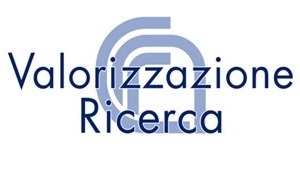TECHNOLOGY DESCRIPTION
CNR researchers have invented a new method for the conversion of wind energy into electric power and have set-up a related Micro Wind Energy Conversion System (micro-WECS). Our micro-WECS allows energy coming from a synchronous generator, to be injected into the national single-phase low-voltage grid. As the wind speed varies and transfers power to the turbine, the system is able to automatically compute and reach the angular speed that allows extracting the maximum available power (MPPT, maximum power point tracking). Differently from other approaches, our micro-WECS tracks the maximum power exploiting an artificial neural network, which operates as a virtual anemometer, and using an electronic circuit that acts as a virtual encoder. Therefore, mechanical sensors are not needed, enabling to achieve a higher reliability and a lower cost. Furthermore, the yielded energy is higher, compared to a traditional system, especially at low wind speed.
The control logic has been implemented on a field programmable gate array (FPGA) platform. This choice allows a higher working frequency and the true parallel execution of several tasks, so that good performance can be obtained despite the use of a simple hardware topology.
The system we have conceived and set-up belongs to the class of Micro Wind Energy Conversion System (micro-WECS), to be connected to the national single-phase low-voltage grid. It could cover a power range from 1 kW to 10 kW. Currently, few devices on the market belong to this class and range.
BENEFITS
The system relies on an artificial neural network that learns the mechanical characteristic of the wind turbine, so that it can act as a virtual anemometer. Therefore, on the basis of the estimated wind speed, the maximum power point angular speed can be computed straightforwardly, thus not requiring a slow iterative maximum power point tracking (MPPT) algorithm. In other words, the invention solves the problem of dead times in the MPPT transients within Micro Wind Energy Conversion System (micro-WECS) employing permanent magnet synchronous machines, without using mechanical sensors (encoder/anemometer). Therefore, the yielded energy is higher, compared to a traditional system, especially at low wind speed, and an increase of reliability and robustness and a decrease of system cost are obtained.
Furthermore, among those known from the literature, the simplest architecture has been chosen for the power stage, which implies the best compromise between cost and performance, taking advantage of the high working frequency allowed by the FPGA implementation.
On the other hand, there are few systems on the market belonging to the class of micro-WECS with a power range from 1 kW to 10 kW. Furthermore, such systems rely on hardware architectures and control systems that have been devised for the Photovoltaics segment; thus, their performance is quite poor.
LIMITATIONS
Due to the chosen hardware architecture (i.e., rectifier + boost converter + inverter), the invention is not suitable for power levels higher than 20 kW. In such cases, conventional hardware topologies encompassing back to back inverters are more suitable, because they allow performing a four-quadrant control of the electrical machine.
The system of electrical protections for grid compliance (e.g., frequency range, voltage range, etc.) has not been implemented, yet.
The mechanical characteristics of the wind turbine must be available, either as the result of experimental tests performed inside a wind tunnel, or as the output of simulations performed using finite element analysis (FEA) tools.
APPLICATIONS
This invention can be used in conjunction with commercial wind turbines with a power range from 1 kW to 10 kW, and it allows obtaining a higher yield than that of a traditional system of the same power rating, especially when installed in locations connoted by a low average wind speed. In particular, the use in conjunction with vertical axis wind turbines allows reducing the volume and weight of the whole micro-WECS, allowing for a better integration in residential applications and commercial/industrial buildings.
This invention also has a great potential because it can be customized on the specific wind turbine with which it is combined by simply reprogramming the FPGA, i.e., without hardware modifications.
MATERIALS
Readiness Level (TRL)
 Patent Grading Report |
Patent Grading ReportThe Grading Patents Report evaluates and grades US patents Sample Buy from Wisdomain |
STATUS
Current status
Italian patent, European patent application, US patent application
AVAILABILITY
Available for
collaboration agreement for commercial exploitation, licensing
INVENTOR / TEAM
G. Vitale, M. Luna, M. Pucci, CNR - Institute of Intelligent Systems for Automation (ISSIA)






